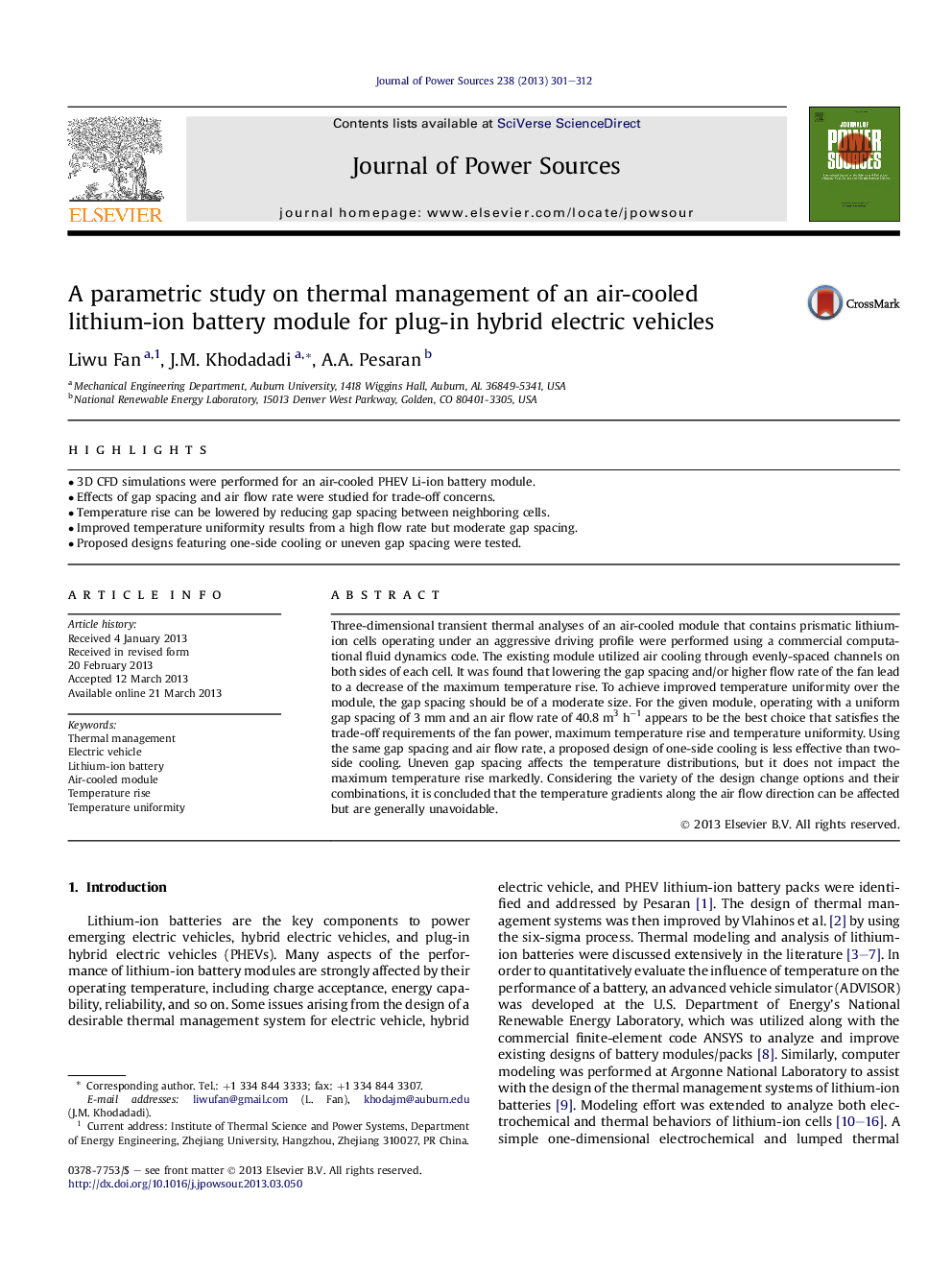| Article ID | Journal | Published Year | Pages | File Type |
|---|---|---|---|---|
| 1284391 | Journal of Power Sources | 2013 | 12 Pages |
•3D CFD simulations were performed for an air-cooled PHEV Li-ion battery module.•Effects of gap spacing and air flow rate were studied for trade-off concerns.•Temperature rise can be lowered by reducing gap spacing between neighboring cells.•Improved temperature uniformity results from a high flow rate but moderate gap spacing.•Proposed designs featuring one-side cooling or uneven gap spacing were tested.
Three-dimensional transient thermal analyses of an air-cooled module that contains prismatic lithium-ion cells operating under an aggressive driving profile were performed using a commercial computational fluid dynamics code. The existing module utilized air cooling through evenly-spaced channels on both sides of each cell. It was found that lowering the gap spacing and/or higher flow rate of the fan lead to a decrease of the maximum temperature rise. To achieve improved temperature uniformity over the module, the gap spacing should be of a moderate size. For the given module, operating with a uniform gap spacing of 3 mm and an air flow rate of 40.8 m3 h−1 appears to be the best choice that satisfies the trade-off requirements of the fan power, maximum temperature rise and temperature uniformity. Using the same gap spacing and air flow rate, a proposed design of one-side cooling is less effective than two-side cooling. Uneven gap spacing affects the temperature distributions, but it does not impact the maximum temperature rise markedly. Considering the variety of the design change options and their combinations, it is concluded that the temperature gradients along the air flow direction can be affected but are generally unavoidable.
